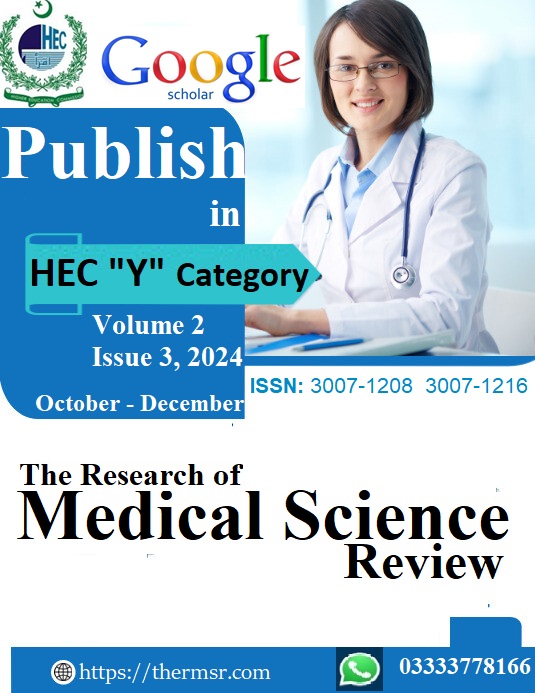RELATIONSHIP BETWEEN POST-PROCEDURAL FRONTAL QRS-T ANGLE AND TIMI FLOW IN PATIENTS WITH ACUTE STEMI UNDERGOING PPCI
Keywords:
Fintech, Financial InstitutionsAbstract
Background: The frontal QRS-T angle has been suggested as a marker of abnormal depolarization and repolarization patterns and has been associated with various cardiovascular outcomes. Objective: Aim of study is to establish relationship between post procedural frontal QRS T angle and TIMI flow in patients with acute STEMI undergoing PPCI. Method: Patients have been divided into 02 groups on the basis of TIMI flow. TIMI (0,1,2) will be labelled as group A and TIMI (3) has been labelled as group B. Post-procedural frontal QRS- T angle has been assessed in both groups. Results: In this study involving 112 patients, normality tests revealed that age (mean 56.21; SD 12.045) and pre QRSTA (mean 82.0485; SD 33.59182) followed a normal distribution. Independent t-tests indicated that age had a significant difference (p = 0.011 and 0.009) between patients with slow and normal flow TIMI groups, while pre QRSTA showed a highly significant difference (p < 0.001) in both groups. Abnormal distributions were observed for post QRSTA (Median 69.66; Inter Quartile Range 48.87), change in QRS T angle (Median 7.66; Inter Quartile Range 10.95), TIMI flow (Median 0; Inter Quartile Range 2), and post TIMI (Median 3; Inter Quartile Range 1). MannWhitney U tests revealed significant differences (p < 0.001) between slow and normal flow TIMI groups for these variables. Chi-square tests showed a significant association (p < 0.001) between MACE and qualitative variables. Pearson correlation analyses demonstrated a strong negative correlation (r = -0.740, p < 0.01) between post QRSTA and post TIMI, a significant positive correlation (r = 0.388, p < 0.01) between post TIMI and change in QRS T angle, a significant negative correlation (r = -0.410, p < 0.01) between post TIMI and MACE, and a significant negative correlation (r = -0.365, p < 0.001) between MACE and change in QRS T angle. Conclusion: Slow flow was associated with higher MACE rates, indicating its clinical relevance. Negative correlations were observed between post QRSTA and post TIMI. MACE also had negative correlations with change in QRS T angle and post TIMI. There was positive correlation between post TIMI and change in QRS T angle.
Downloads
Downloads
Published
Issue
Section
License

This work is licensed under a Creative Commons Attribution-NonCommercial-NoDerivatives 4.0 International License.














